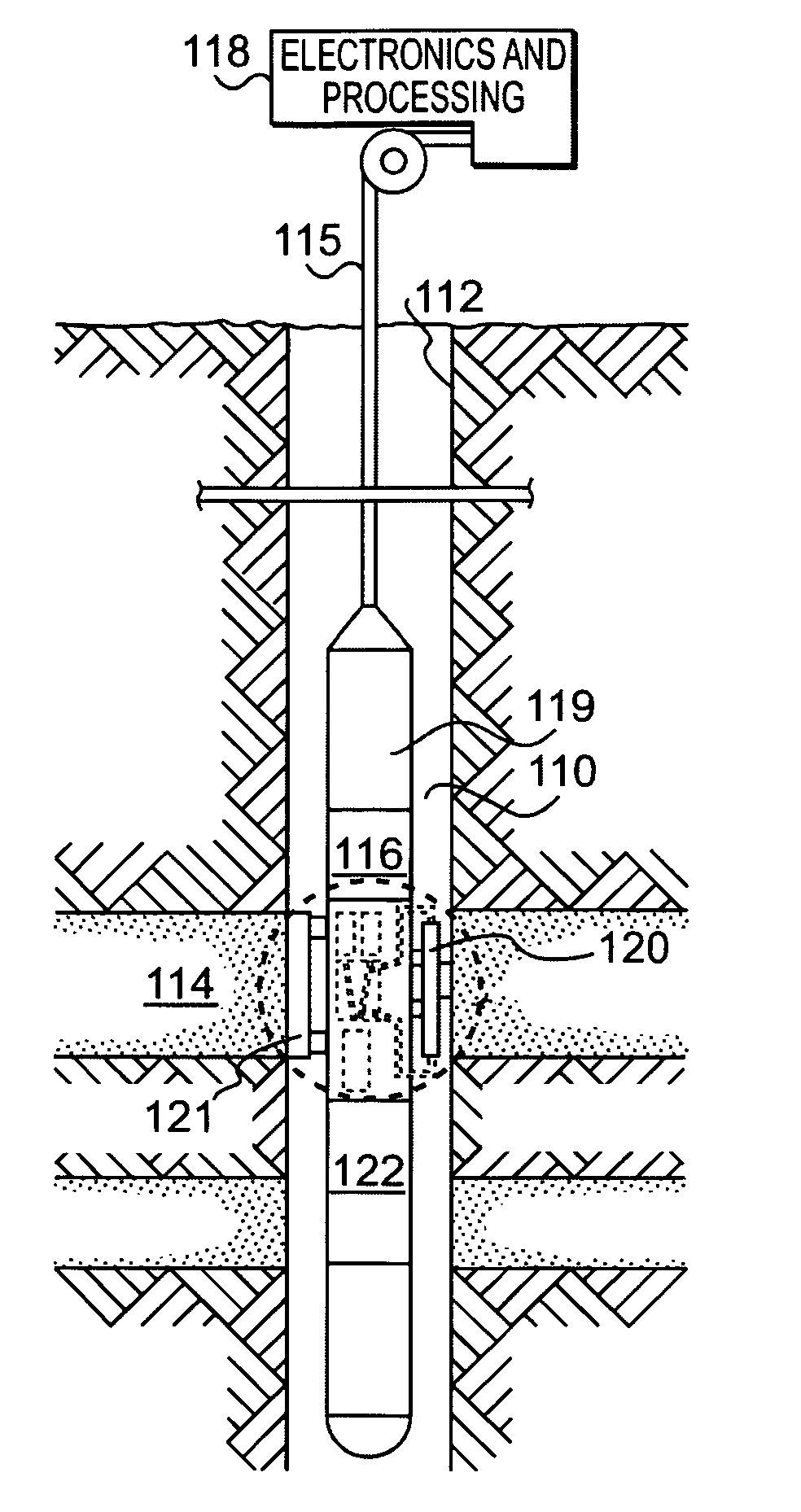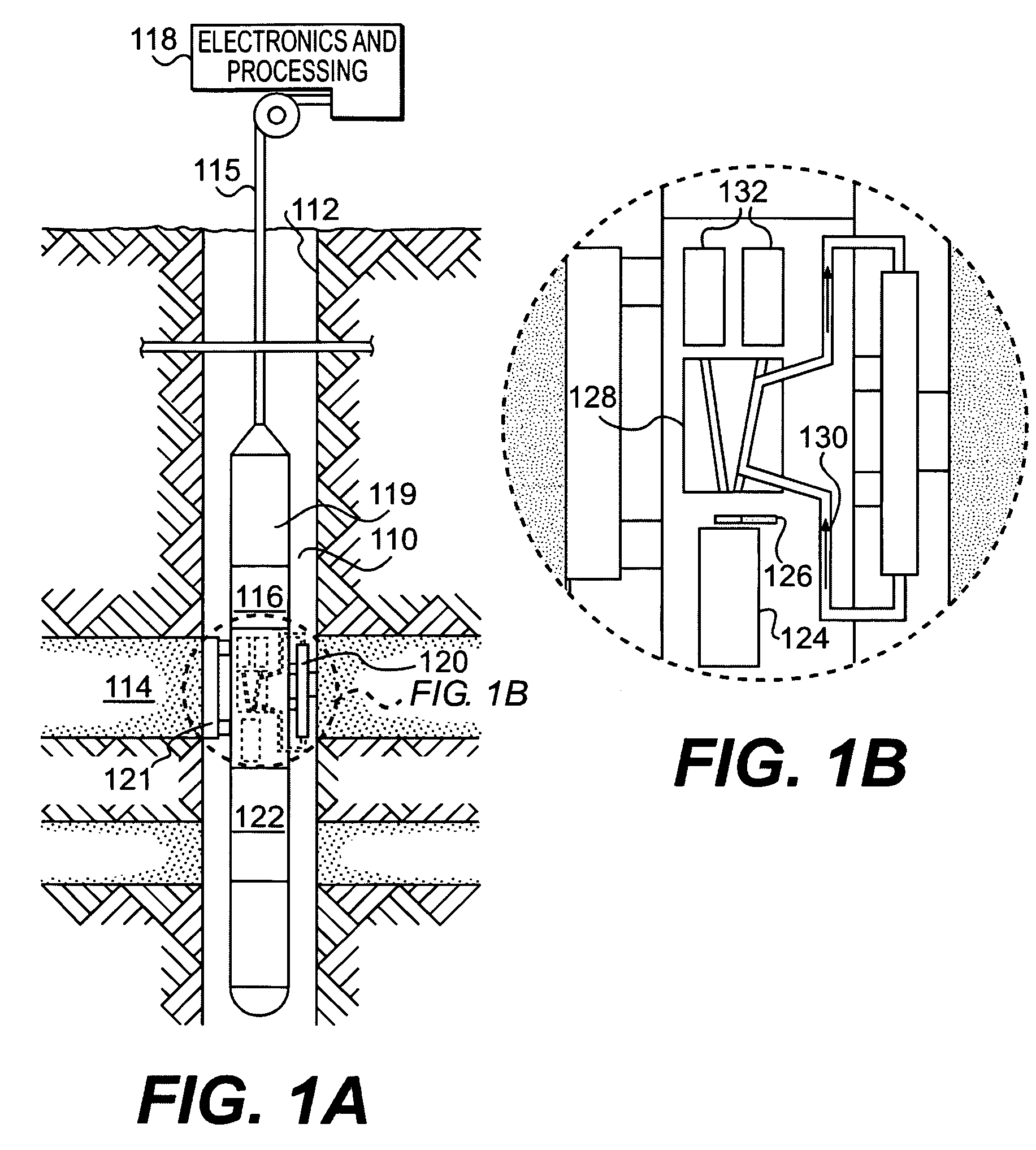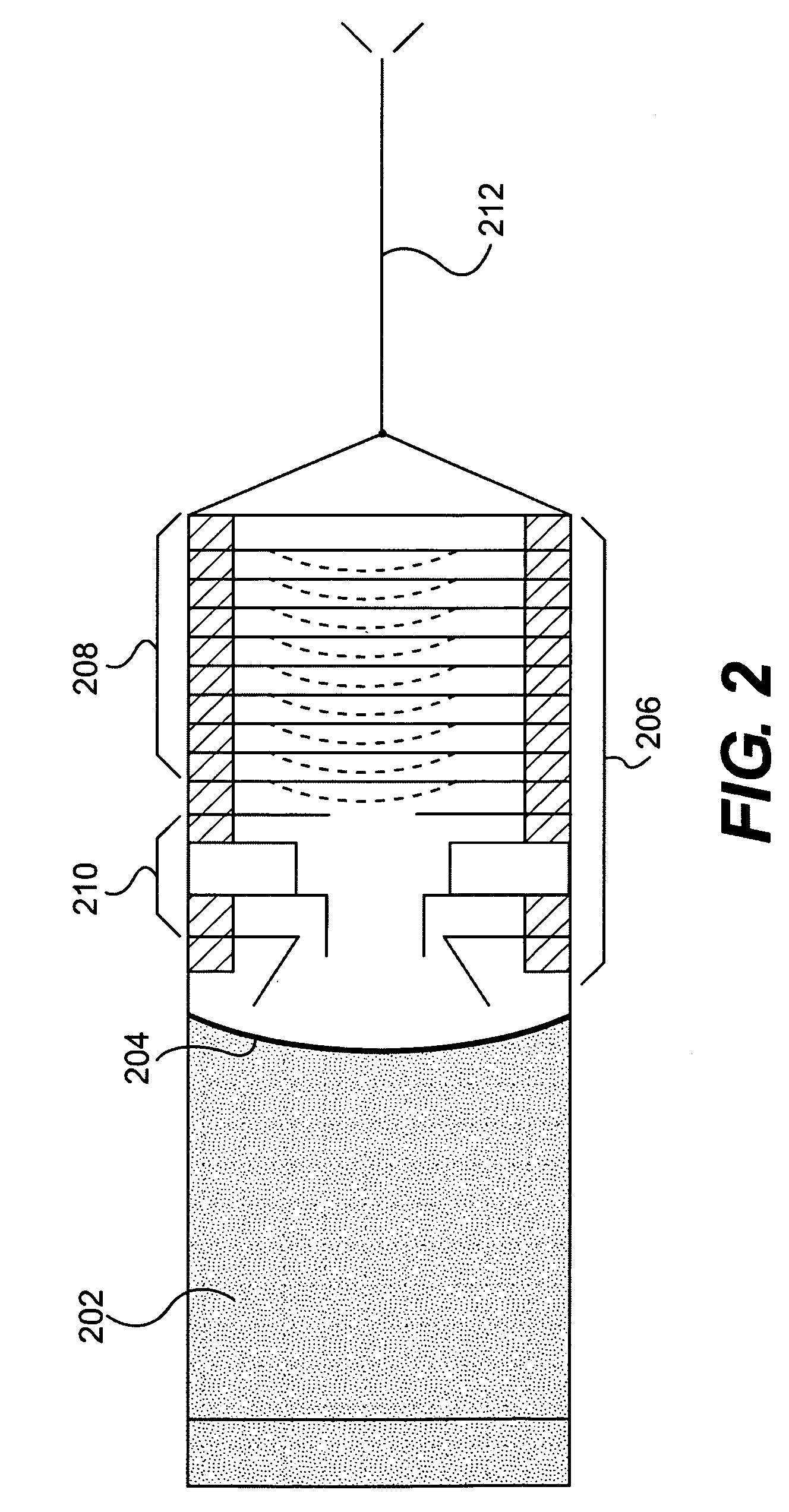Method and apparatus for radiation detection in a high temperature environment
a radiation detection and high temperature environment technology, applied in the field of radiation detection methods and apparatuses, can solve the problems of not being able to eliminate gaps completely, all of these approaches suffered from one or more limitations, and the photons created in the scintillation process are abated
- Summary
- Abstract
- Description
- Claims
- Application Information
AI Technical Summary
Benefits of technology
Problems solved by technology
Method used
Image
Examples
Embodiment Construction
[0009]A preferred embodiment of the invention comprises a method and apparatus for measuring radiation in a high temperature environment. In a preferred embodiment, a photocathode is deposited directly onto a concave surface of a scintillating material. This surface is oriented toward an electron multiplier comprising focus electrodes and a dynode stack. Radiation incident on the scintillating material causes it to generate light, when this light comes into contact with the photocathode, electrons are output that are then amplified by the electron multiplier and output on a wire for measurement.
THE DRAWINGS
[0010]Objects and advantages of the present invention will become apparent from the following detailed description of embodiments taken in conjunction with the accompanying drawings, wherein:
[0011]FIG. 1A is a schematic view of the context in which the present invention can be used to advantage.
[0012]FIG. 1B is an expanded schematic view of a scintillator system for measuring dens...
PUM
 Login to View More
Login to View More Abstract
Description
Claims
Application Information
 Login to View More
Login to View More - R&D
- Intellectual Property
- Life Sciences
- Materials
- Tech Scout
- Unparalleled Data Quality
- Higher Quality Content
- 60% Fewer Hallucinations
Browse by: Latest US Patents, China's latest patents, Technical Efficacy Thesaurus, Application Domain, Technology Topic, Popular Technical Reports.
© 2025 PatSnap. All rights reserved.Legal|Privacy policy|Modern Slavery Act Transparency Statement|Sitemap|About US| Contact US: help@patsnap.com



